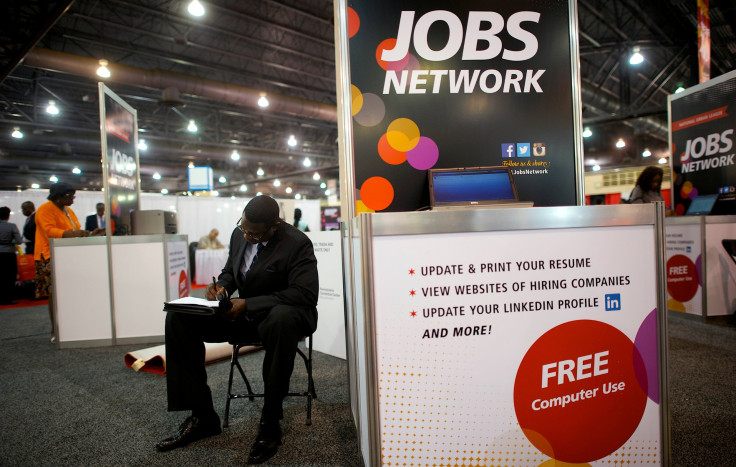Job Losses Hurt How A Community’s Children Perform In School, Study Says

General Motors. Nike. AOL and Yahoo. Each wave of layoffs leaves hundreds of workers jobless — hurting not just the individuals who are suddenly unemployed, or even just their families, but children and adolescents across the state, researchers say.
In fact, according to a study published last week in Science magazine, a publication of the American Association for the Advancement of Science, a 7 percent statewide loss in jobs during a low-income child’s adolescence lowers the chance that they’ll head to college by 20 percent.
Read: Trump Health Care Tax Cut Could Lead To Layoffs, Not New Jobs
Plenty of research has documented the adverse impact of a parent’s sudden job loss on the average child, in terms of mental health and economic prospects. But, pulling from a wide variety of datasets — from the Internal Revenue Service, standardized test score records and the Bureau of Labor Statistics, among others — the authors took a macro-level look at the effect of layoffs on surrounding communities. Rather than relying on BLS unemployment rates, they also used instances of large, sudden job losses, as changes in the general, month-to-month jobless rate can be skewed by similar changes in the number of Americans counted in the labor force.
A 1 percent sudden statewide loss in jobs affects 1.5 percent of students directly — and indirectly led the remaining 98.5 percent of students to experience “learning losses ... that are about one-third the size of those experienced by children whose parents lose jobs.” More specifically, that 1 percent job loss lowered the state’s eighth-grade math test scores by 0.057 standard deviations, an amount roughly the same size as the increase that results from intervention efforts intended to boost test scores.
“What I see as one of the main points in our study is that the effects on people who lost their job or the children of people who lost their jobs — there are spillover effects,” said Dania Francis, one of the study’s authors and an assistant professor of economics at the University of Massachusetts at Amherst. “It’s more than just the people who have lost their jobs.”
The impact of layoffs was magnified among African-American communities, where “inequality in college attendance [increased] by nearly twice as much as the average across the country,” the study noted. The effects were psychological as well, as suicidal thoughts among black adolescents, as measured by a survey of youth risk behavior, rose by 2.33 percentage points — well above the average for all students and an increase “too large to be driven only by youth who experience job loss within their own families,” according to the study.
Still, the authors advocated for a holistic policy approach to countering the harm of layoffs, as opposed to varying programs for different demographics.
“I guess the main point we’re trying to make is that there’s more room for groups to work together,” Francis said. “Part of the narrative of the [2016 presidential] election seemed to be intended to divide us.”
Anna Gassman-Pines, another of the study’s authors and an associate professor of psychology and neuroscience at Duke University’s Sanford School of Public Policy, echoed her colleague, saying that layoffs are “not just the problem of the white working class.”
Read: CSX Layoffs Are Latest Employment Losses Under New President
As for how to solve, or at least mitigate, the problem in the more immediate term, she said, professionals in the mental health system ought to “be on the lookout” for the psychological fallout of mass layoffs among children and teens.
But in the long term, Gassman-Pines said, policymakers should be more proactive in forging protections for displaced workers, rather than simply trying to halt mass layoffs or providing benefit programs with limited eligibility such as Trade Adjustment Assistance.
Such policies help communities on a psychological level, she said, “because they know, if this happens to me, if this happens to my parents, I can be confident that we’ll make it through this.”
Francis — who suggested that, as a short-term fix, governments at every level avoid cutting school budgets so that they can maintain robust after-school programs and counselling — stressed that the conversation around layoffs was ripe for a shift beyond the frequent targets of trade and globalization.
“It was more so job displacements by technology that have affected these places” suffering worst in the study, she noted, and “less so because of trade.”
A “new blue collar” workforce of individuals with even associate’s-level STEM, or science, technology, engineering and math, degrees or educated through vocational training and apprenticeship programs, not necessarily master's or other high-level degrees, Francis said, was needed to address the demand for new skills in the American workforce.
© Copyright IBTimes 2024. All rights reserved.






















